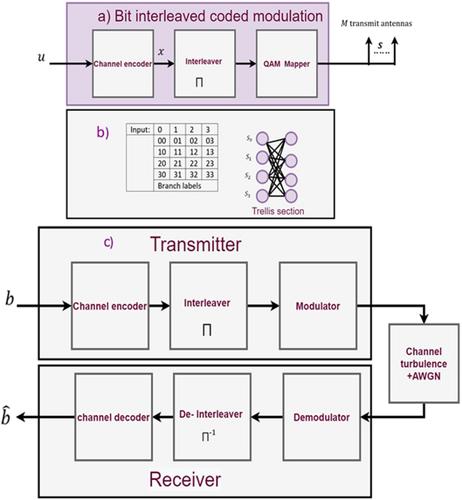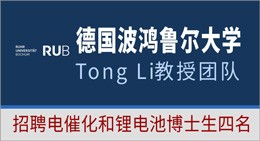当前位置:
X-MOL 学术
›
IET Optoelectron.
›
论文详情
Our official English website, www.x-mol.net, welcomes your
feedback! (Note: you will need to create a separate account there.)
Coding techniques for diversity enhancement of dense wavelength division multiplexing MIMO-FSO fault protection protocols systems over atmospheric turbulence channels
IET Optoelectronics ( IF 2.3 ) Pub Date : 2024-02-06 , DOI: 10.1049/ote2.12111
Ebrahim E. Elsayed 1 , Mohammed R. Hayal 1 , Irfan Nurhidayat 2 , Mohd Asif Shah 3, 4, 5 , Abdelrahman Elfikky 6 , Ayman I. Boghdady 7 , Davron Aslonqulovich Juraev 8, 9 , M. A. Morsy 10
IET Optoelectronics ( IF 2.3 ) Pub Date : 2024-02-06 , DOI: 10.1049/ote2.12111
Ebrahim E. Elsayed 1 , Mohammed R. Hayal 1 , Irfan Nurhidayat 2 , Mohd Asif Shah 3, 4, 5 , Abdelrahman Elfikky 6 , Ayman I. Boghdady 7 , Davron Aslonqulovich Juraev 8, 9 , M. A. Morsy 10
Affiliation

|
An enhanced transmission is presented in a multiple-input-multiple-output (MIMO) dense-wavelength division multiplexed (DWDM) free-space-optical (FSO) communication link using diversity coding techniques under the effect of turbulent weather phenomenon. The findings show good performance with an (8 channels × 2.5 Gbps data rate/channel) 20 Gbps 1500 m transmission distance. The bit-error-rate (BER), outage probability (OP), and signal-to-noise ratio (SNR) of the diversity combining techniques using maximum-ratio combining (MRC), selection combining (SC), and equal-gain combining (EGC) technique are evaluated in this work. The obtained results illustrate that Alamouti, space-time coding (STC), space-time block coding (STBC), space-time trellis code (STTC), orthogonal STBC (O-STBC), and quasi-orthogonal STBC (QO-STBC) on the minimum mean-square-error, and MRC are worth implementing on the DWDM-FSO wireless communication systems. The mitigation of atmospheric turbulence is achieved using MIMO diversity combining techniques coding. The simulation results for diversity coding techniques using QO-STBC/STTC and SC/MRC in the MIMO-DWDM FSO communication system can improve BER performance, OP, and SNR. The MRC exhibits the lowest OP and BER when compared with the SC and EGC. The numerical results demonstrate that the FSO communication link using DWDM QO-STBC/STTC improves the power penalty at both BER values under varying atmospheric turbulence conditions for ST, MT, and WT, in comparison to FSO systems without DWDM QO-STBC/STTC diversity coding techniques.
中文翻译:

大气湍流信道上密集波分复用MIMO-FSO故障保护协议系统分集增强的编码技术
在湍流天气现象的影响下,使用分集编码技术在多输入多输出(MIMO)密集波分复用(DWDM)自由空间光(FSO)通信链路中呈现增强的传输。研究结果表明,在(8 通道 × 2.5 Gbps 数据速率/通道)20 Gbps 1500 m 传输距离下具有良好的性能。使用最大比组合 (MRC)、选择组合 (SC) 和等增益的分集组合技术的误码率 (BER)、中断概率 (OP) 和信噪比 (SNR)这项工作评估了组合(EGC)技术。获得的结果表明,Alamouti、空时编码(STC)、空时块编码(STBC)、空时网格码(STTC)、正交STBC(O-STBC)和准正交STBC(QO-STBC ) ) 的最小均方误差,并且 MRC 值得在 DWDM-FSO 无线通信系统上实现。大气湍流的缓解是通过使用 MIMO 分集组合技术编码来实现的。在MIMO-DWDM FSO通信系统中使用QO-STBC/STTC和SC/MRC的分集编码技术的仿真结果可以改善BER性能、OP和SNR。与 SC 和 EGC 相比,MRC 表现出最低的 OP 和 BER。数值结果表明,与没有 DWDM QO-STBC/STTC 分集的 FSO 系统相比,使用 DWDM QO-STBC/STTC 的 FSO 通信链路在 ST、MT 和 WT 的不同大气湍流条件下改善了两个 BER 值的功率损失编码技术。
更新日期:2024-02-06
中文翻译:

大气湍流信道上密集波分复用MIMO-FSO故障保护协议系统分集增强的编码技术
在湍流天气现象的影响下,使用分集编码技术在多输入多输出(MIMO)密集波分复用(DWDM)自由空间光(FSO)通信链路中呈现增强的传输。研究结果表明,在(8 通道 × 2.5 Gbps 数据速率/通道)20 Gbps 1500 m 传输距离下具有良好的性能。使用最大比组合 (MRC)、选择组合 (SC) 和等增益的分集组合技术的误码率 (BER)、中断概率 (OP) 和信噪比 (SNR)这项工作评估了组合(EGC)技术。获得的结果表明,Alamouti、空时编码(STC)、空时块编码(STBC)、空时网格码(STTC)、正交STBC(O-STBC)和准正交STBC(QO-STBC ) ) 的最小均方误差,并且 MRC 值得在 DWDM-FSO 无线通信系统上实现。大气湍流的缓解是通过使用 MIMO 分集组合技术编码来实现的。在MIMO-DWDM FSO通信系统中使用QO-STBC/STTC和SC/MRC的分集编码技术的仿真结果可以改善BER性能、OP和SNR。与 SC 和 EGC 相比,MRC 表现出最低的 OP 和 BER。数值结果表明,与没有 DWDM QO-STBC/STTC 分集的 FSO 系统相比,使用 DWDM QO-STBC/STTC 的 FSO 通信链路在 ST、MT 和 WT 的不同大气湍流条件下改善了两个 BER 值的功率损失编码技术。


































 京公网安备 11010802027423号
京公网安备 11010802027423号